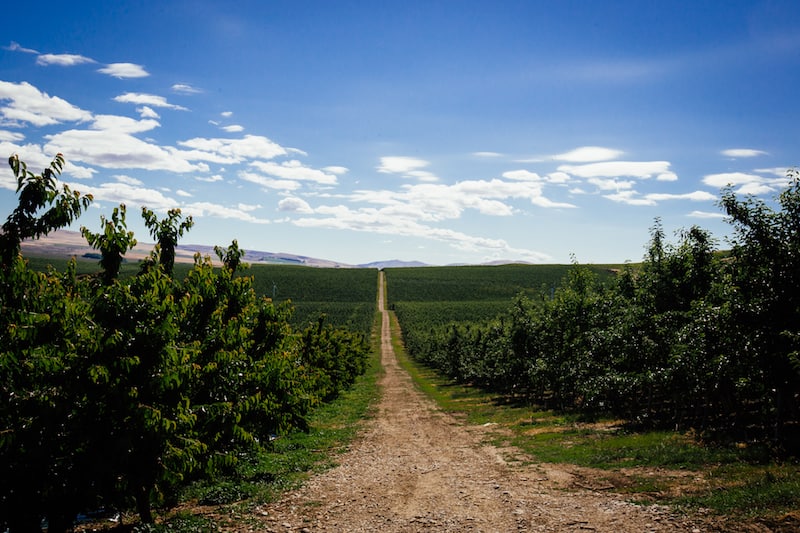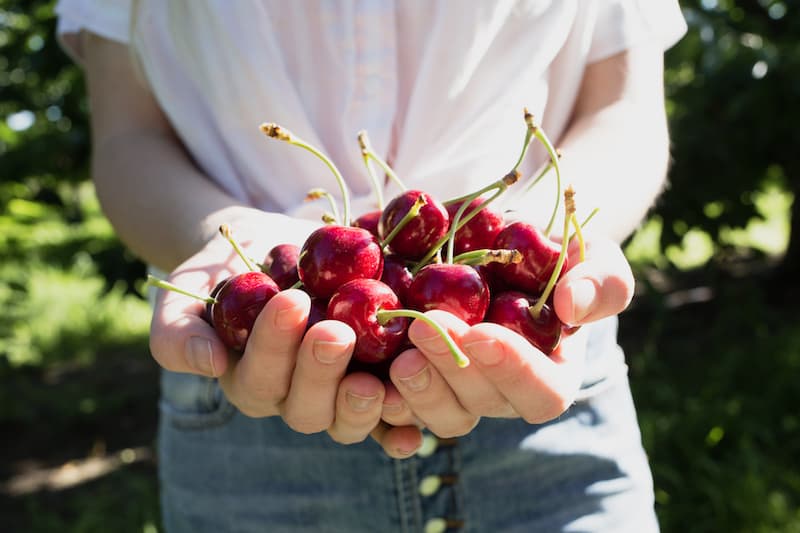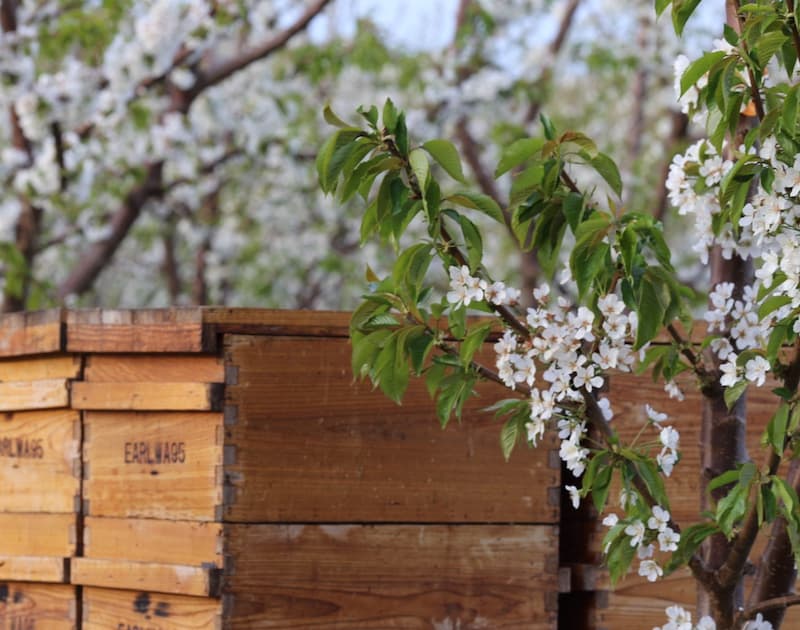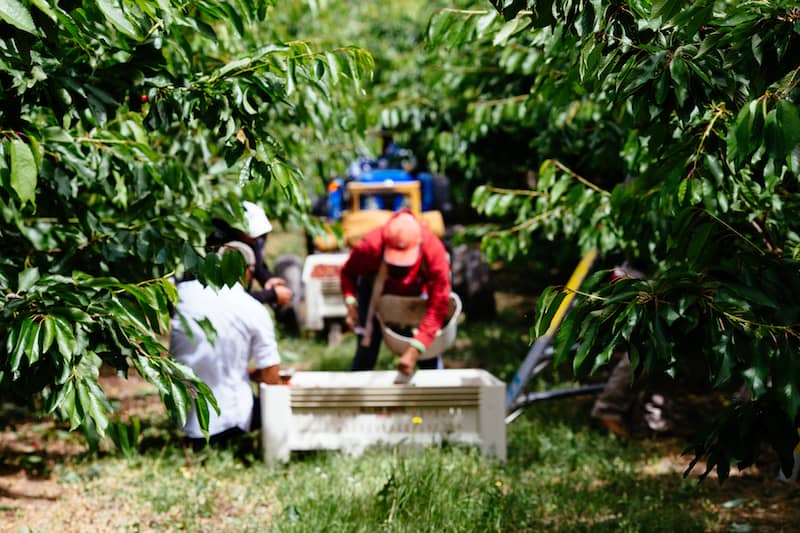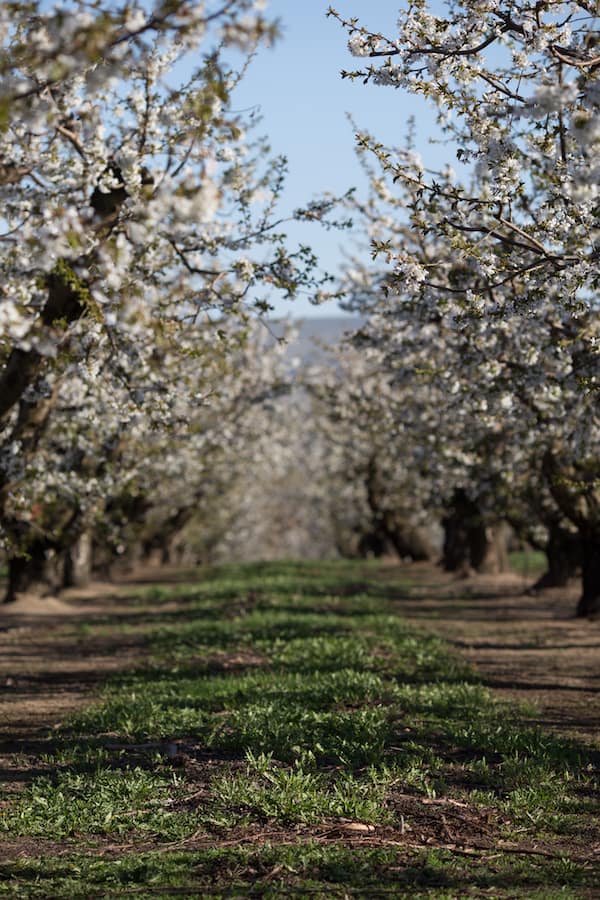Hanging onto one of Washington’s sweetest summer assets, cherries
written by Corinne Whiting
In summer months, rich and juicy cherries reign supreme here. Loyal fans rejoice when that scrumptious, short-lived window arrives, loading up on the seasonal treats for backyard barbecues and alfresco concerts. Some might say you haven’t truly experienced Washington until you’ve visited the Chukar Cherries stand at Pike Place Market or sunk your teeth into cherry pie at North Bend’s Twede’s Café (of “Twin Peaks” fame).
As one of the freshest produce items around, Northwest sweet cherries never land in consumers’ hands more than a few days after coming off the tree. (Cherries are generally harvested, packed and placed on the shelf within two days.) The season can stretch from the first week of June until the end of August, thanks to growing regions scattered throughout Washington, Oregon, Idaho, Utah and Montana. Small differences in microclimates mean cherries ripen at slightly staggered times. Winter and spring weather can potentially compress the crop to half its length, too—or shift the start date by thirty days. Research shows cherries are a “72 percent impulse rate purchase,” said James Michael, Northwest Cherries’ vice president of marketing for North America. “ This is simply human nature when you see those big, beautiful cherries.” The Northwest is the largest producer of cherries in the country and the second in the world. Last year, the region reached its biggest crop (26 million boxes).
Thirty percent of those products get exported. However, obstacles abound for the growers and shippers. “ The biggest challenge,” Michael said, “is that, unlike apples (available year round), we have to fight for shelf space again every season.” Most retailers need six weeks to lock in newspaper ads, but it’s tricky for growers to predict seasons that depend so heavily on Mother Nature. From the moment the first tree produces, it becomes a “dead sprint” for eight weeks. “Beyond the crop timing, continual corporate consolidation among retailers along with shifts in demographic shopping behaviors and an increasingly data-driven store plan takes getting your fruit to market to a whole new level,” Michael said. “And since the cherry season unfolds in real time for everyone, it puts the burden of success on coordinated planning.” “Growers need help,” Michael continued. “ That’s where we come in.”
Northwest Cherries represent 2,100 growers from five states who grow twelve major conventional varieties. “To represent the growers, you need to talk with them. You need to walk their farms and let them show you their world through their eyes.” Referencing everything from the Farmers’ Almanac to Washington State University’s “hardcore AgWeatherNet data,” Northwest Cherries annually estimates the crop’s arrival and progression. If it is off the mark by even a week with either the crop projection or marketing, growers might miss their potential return. Washington’s climate is consistently suitable for this particular crop, and the chief reason the state also grows award-winning grapes and wine. Cold winters keep pests and disease low, and water and snowpack abound. Trees enjoy a “solid dormant season” of rest here, too.
Long summer days also lead to extra sunlight throughout the growing season. Cool nights permit cherries to retain some of their acidity, creating more flavor development. “Like lemonade, you want that balance of tart and sweet,” Michael said. Michael admits it’s more than sheer location that makes Washington’s cherry scene so remarkable. “It’s the growers. The collective wisdom, education and experience is incredible,” he said. “But most importantly, they actively work to share it with each other in order to grow better fruit. This isn’t just a great spot in the world, but these are the best growers in the world … and I’m not just saying that since I work with them.” On top of stunning flavor, sweet cherries o er health bene ts like natural anti-inflammatory properties and plant-sourced melatonin. Current trials examine the fruit’s effects on blood pressure and breast cancer. “It’s amazing to see our growers put their own money into researching a fruit that’s been around for thousands of years,” Michael said. “ They feel it’s special—now they’re proving it.”
Despite the many varietals of cherries, Bing is still the king, according to Michael. Worldwide, some of the first Northwest cherries shoppers see include Chelan, Tieton and Early Robin (a relatively new sub-variety of Rainier). These early ones come from Mattawa, Walla Walla and then the Tri-Cities. After that, the chronological progression moves in a northwestern direction and up in elevation—eventually, extending to the Canadian border. Michael calls cherries a gambler’s crop. “Cherry growers are riverboat gamblers, full stop,” he said. “No matter what, Mother Nature holds all the cards.” Although those involved expect to lose about one crop out of four, there is still money to be had in the business. As with all modern-day farming, however, smaller family operations must fight to hang on. is is exactly why Michael, who comes from a three-generation Washington vineyard, chose this career. “If we can help keep families working together to produce food for the country and the world, what better thing can we do? Plus, it stays pretty outside our windows. We see farms instead of subdivisions.”



